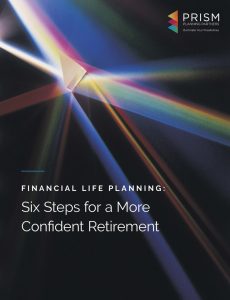Turning 50 is a significant milestone for many reasons. Your children may be grown and leaving home. Retirement, which has seemed far in the future for decades, suddenly looms as a real thing that will occur.
Are you on the right financial path? Contact Prism Planning Partners today!
As a result, 50 serves as a natural point where many people reassess their financial life. Are you set for retirement? What are your retirement goals? (After all, no one wants to be retired and bored.)
It’s also a time to make financial moves that will pay off in the future, including meeting with a financial advisor to create a comprehensive financial plan.
Here are the other top moves you might want to consider making:
1. Review your goals
Financial checklists are not just about finances. They’re also about life goals. Your current goals could be set to the desires of a younger person, such as saving for home and family vacations.
Now it’s time to develop goals for the rest of your life. Do you want to travel to see places you’ve never seen, for example? Start a business? Retire to a new location?
No financial plan exists in a vacuum. It needs to be linked to your specific goals.
2. Maximize your retirement savings
Optimizing your retirement savings is a good idea at any age — but it’s particularly important at 50 for several reasons.
First, if you don’t have adequate retirement savings there’s still time to accumulate a nest egg that will stand you in good stead in retirement.
Second, the Internal Revenue Service (IRS) increases the maximum amount folks 50 and over can save — so if you utilize those catch-up amounts, you can really power a retirement portfolio.
The maximum amount you can put in a 401(k), for example, rises from $19,500 to $26,000 if you’re 50 or older, a $6,500 increase. The maximum amount you save in an individual retirement account (IRA) rises from $6,000 per year to $7,000*.
3. Review your estate plan
An estate plan generally consists of two components: a Last Will and Testament and powers of attorney for medical and financial affairs.
It’s not uncommon for younger people to go without an estate plan (although they shouldn’t — everyone with any assets at all should have one). But at 50, you could be putting both yourself and your family at risk if you don’t have an estate plan.
Why? Well, if you should die without a will, your assets can be tied up in probate for months and even years. That includes all accounts, including checking, savings, and retirement, unless they are held jointly. It also includes your home, other real estate, and other personal property. Until the will goes through probate, your spouse and any other family members will not be able to access your assets.
Second, the only way to ensure that your assets are bequeathed to the people you want to have them is to have a will.
Third, if you become too ill or incapacitated to look after your own affairs, life for both you and your family could become far more challenging than it needs to be. This is where powers of attorney come in.
If you have a financial power of attorney, your designated person can make sure your financial affairs are taken care of, including paying your medical and other bills. Without a power of attorney, your family will not be able to access your financial affairs (unless they have access to jointly held accounts).
A medical power of attorney means that your designated person has the right to make medical decisions for you.
Both powers of attorney can be set up to be nondurable or durable. A nondurable power of attorney ends when you become able to manage your own affairs again. A durable power of attorney doesn’t.
If you currently have a will and powers of attorney, review them to make sure that they still fit your current situation. If new children or grandchildren aren’t included, for example, now is the time to add them.
If you don’t have a complete estate plan, now is a prudent time to develop your will and discuss powers of attorney with potential designees.
4. Review your risk management
Risk management consists of making sure your assets are appropriately protected through insurance. If you have a family, for example, you may want to consider life insurance, which will provide some financial support in the event of your demise. Your assets such as home, vehicles, and other property should be sufficiently insured that they can be easily replaced.
If your children have left home, though, it could be time to review your life insurance requirements. Does your spouse need life insurance, or are they financially self-supporting?
It also may be time to think about long-term care insurance. Long-term care is often needed by older people and can be expensive without insurance. While Medicaid can be available, it often requires that people drain their own assets first.
It’s prudent to discuss long-term care insurance with a financial advisor.
5. Ascertain where all your retirement accounts are
It’s not atypical for people to have several retirement accounts. At one point, people held the same job for life or only had a few employers. No longer! People change jobs much more often than they once did — and that makes keeping track of retirement accounts a necessity.
If you had 401(k) accounts with various employers, for example, they might still be held with those employers. You may have held IRAs with several different financial institutions. You may have had pensions or company stock with one employer but not with others.
At the age of 50, it’s a good idea to inventory your retirement accounts. It’s all too easy to lose track of them! Think through all the employers you’ve had.
Did they offer retirement benefits, such as company stock, pensions, annuities, or 401(k)s? Some employers may have benefits you weren’t aware of at the time, especially if you were quite young. Contact them if necessary.
Inventory any retirement accounts you may have opened on your own as well. Did you open an IRA at any point? Did you roll over any IRAs or 401(k)? Where are they now?
Making sure you know where your retirement accounts are is essential to maximizing your funds and accessing them once it comes time to retire. It might also be worth considering consolidation so you don’t lose track!
Discuss your financial life at 50 with a financial advisor. At Prism Planning Partners, we are CERTIFIED FINANCIAL PLANNER™ Professionals committed to facilitating important questions so that we can help you explore all of your opportunities. We offer a broad array of financial planning and consulting services for our clients-including estate planning.
Contact us today and let us illuminate your possibilities!
 Download our free eBook today!
Download our free eBook today!
*Contribution amounts effective for 2020 and 2021



